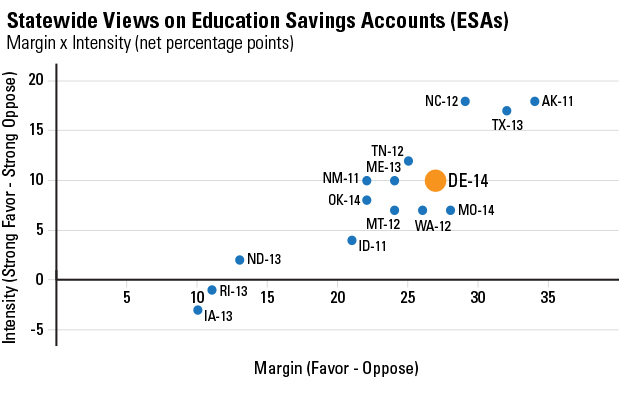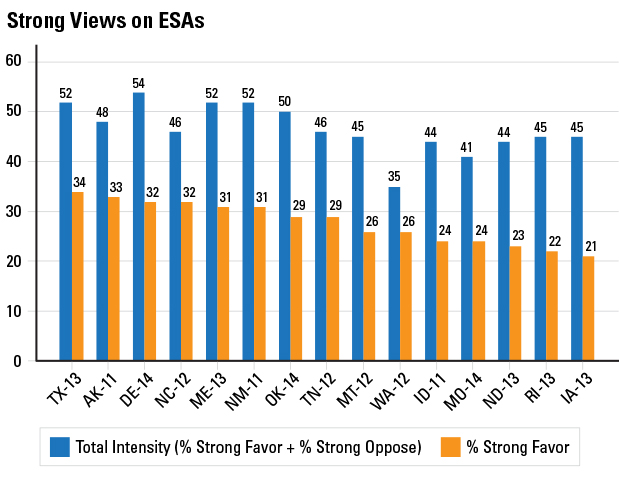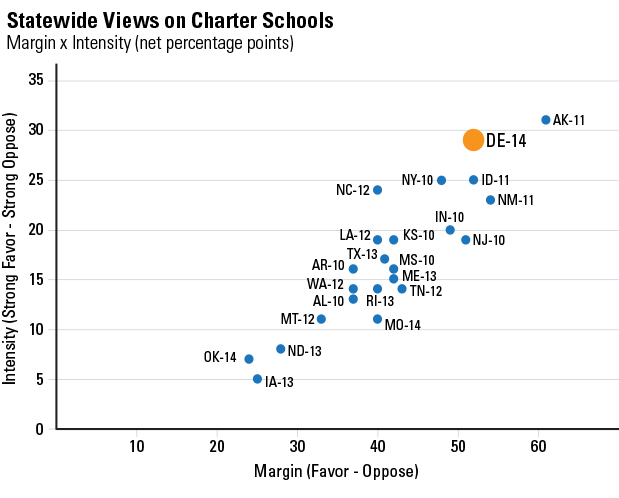Surveying the Path for ESAs in Delaware
“Our students are our future and the key to our efforts to ensure Delaware will compete and win in the 21st century economy,” Gov. Markell said last year. “They will only perform their best if we put them in an environment that is most conducive to learning for them. This bill will help families navigate the available options and make the right educational choices for their children.” Those remarks were delivered by Gov. Markell during an event where he signed a bill making it easier for families to enroll in charter schools and public schools outside their district. Such legislation may move Delaware closer to Gov. Markell’s vision. However, if the governor wants his state’s students to compete in a “21st century economy,” he’ll need a 21st century education system—which some states are finding goes beyond charter and public schools.
How Education Savings Accounts (ESAs) take schooling outside school walls.
ESAs represent a new educational choice mechanism, establishing a government-authorized savings account, and the use of debit cards, which allow parents to receive and control a portion of their children’s dedicated public education funding.
ESAs are a forward-thinking policy design, bringing a new kind of flexibility to families, while at the same time, encouraging parents to consider opportunities, costs, and tradeoffs. ESAs don’t limit a family’s decision-making solely to enrolling their children in schools. Parents also can use ESA funds for online learning courses, homeschool expenses, tutors, therapists, or a combination of those tools to educate their kids. ESAs also have a pioneering feature that allows parents to save unused funds for future educational expenses, such as college enrollment and related costs.
ESAs are a forward-thinking policy design, bringing a new kind of flexibility to families, while at the same time, encouraging parents to consider opportunities, costs, and tradeoffs. ESAs don’t limit a family’s decision-making solely to enrolling their children in schools.
The first ESA plan was created in Arizona in 2011. This year Florida enacted the country’s second program. Based on Delaware voters’ reactions to ESAs, compared with voters from other states, their state could be next.
A substantial proportion of voters support ESAs in Delaware.
In August, Braun Research interviewed 600 registered voters across Delaware to get their views on a number of education-related issues, including ESAs. Those results were released in the Friedman Foundation’s Delaware K-12 and School Choice Survey.
By comparing Delawareans’ ESA responses to those from other states, some caution is warranted: It is not ideal to compare surveys of discrete populations in separate time periods. This comparison assumes policy opinions are generally stable over time, especially on issues that are not “high-profile,” such as most matters in the education policy arena. That said, when it comes to viewpoints on choice reforms, it is possible to describe some general impressions related to the world of advocacy and policymaking.
First, Delaware voters are much more likely to favor ESAs than oppose such a system (59 percent favor vs. 32 percent oppose). The margin of support is large (+27 points) and the intensity on the topic is substantially positive (+10 points).


And when it comes to choice reforms in K-12 education, Delaware voters’ reactions to ESAs are not an isolated anomaly.
Support for charter schools in Delaware reached levels not seen by a Friedman Foundation survey in three years.
Alaska (2011) and New Mexico (2011) were the last two states where the proportion of voters supporting charter schools eclipsed 70 percent. Delaware reached 72 percent:

Based on what is observed in this survey, it makes sense for Gov. Markell to be a leading governor on charter schools. But, again, when compared with ESAs, it also suggests he need not constrain families’ options solely to the public sector.
Where does this openness to ESAs among Delaware voters come from?
Although it is not possible to reach definitive answers from the Friedman Foundation/Braun Research survey, Delawareans’ familiarity and support for charter schools and private schools may be fueling their interest. With the prevalence of both types of schools, a culture of choice in K-12 education may be more established in Delaware, compared with other states.
Given the action they’ve already taken on public school choice, Delaware’s state leaders should take note of voters’ strong interest in ESAs, which could further transform their state’s educational topography.
For more on what Delaware voters think about various education-related topics, download the Delaware K-12 and School Choice Survey.




